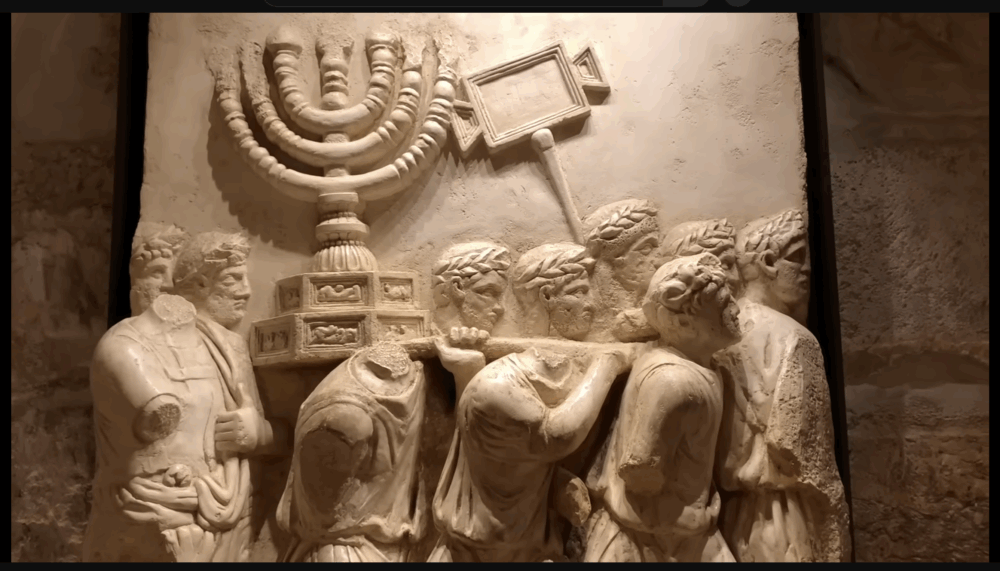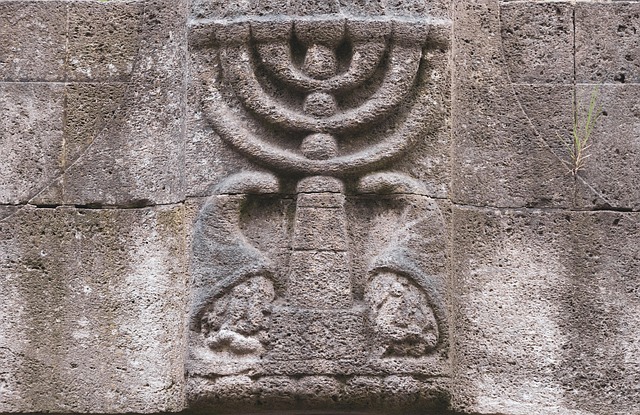
History as a Foundation
In this post, I want to highlight the importance of history, particularly as the foundation of our beliefs, whether spiritual, religious, or political. Too often, I see people completely disregard historical context and facts to fit a delusional narrative that serves their own interests, even in the spiritual community, or to criticize one group over another. History tells more than just facts. It tells stories and how culture unfolds over time, and it also provides us with a more accurate understanding of the spirit and identity of different peoples. Also, some of you have asked me about my writing recently, and here’s the truth: when I write, I rarely feel like it is me who is writing. I do more listening and weaving of ideas that arise. If you still don’t get it, I don’t get it either, so don’t worry about it too much. Now, before I get started, a little fun fact about me. I almost failed history in high school, but I was great at writing essays and always scored above 85. My English teacher didn’t like that I was more interested in bagels in history class, so she gave me a rather shitty grade instead. Talk about fairness. My history teacher, on the other hand, was a bit strange, and when I think of her, I only remember her profile for some reason, and while she lectured in a soul-numbing voice that almost felt like a slow death, I actually found it perfect for daydreaming, and eating bagels, of course.
While there can be more than one side to history, or “textbook history” as it is now called, overall, we have a great deal of artifacts, including newer ones, that give us a fairly accurate understanding of past events and how culture unfolded over time. From 1947 to 1957, the Dead Sea Scrolls, over 800 manuscripts to be precise, were found near Qumran, about a day’s walk from Jerusalem, and in what is now the West Bank. The scrolls were written by an extinct religious sect that existed at the same time Jesus walked the earth, in various languages such as Aramaic, Greek, Latin, and Hebrew. These were the languages spoken in the region more than 2,000 years ago. The caves in the area gave us manuscripts dating from 300 BCE to 100 CE, a crucial time in our world’s history, and include biblical texts, alternate versions of biblical texts such as the Genesis Apocryphon written in Aramaic, original works never seen before, sectarian writings, and other Jewish documents.
What I found interesting is that among these scrolls were the sectarian scrolls, the third grouping, which described the life and teachings of the people who made the scrolls. This was a secretive and apocalyptic group that called themselves the Sons of Light. Most scholars, given the chronology and archaeological findings, agree that the scrolls were hidden around 66 to 70 CE, during the First Jewish Revolt against Rome, which ended with the destruction of Jerusalem and the Second Jewish temple. It is said that this vicious conflict was so intense that the members of the sect never returned to retrieve their scrolls in the isolated desert of Qumran.

Early Christians
The manuscripts found of the secretive sect, The Sons of Light, have sparked thousands of books written about who they were and what they meant for Christianity. Of course, naturally, the impact of these findings has produced expectancies in many, and everyone involved in the interpretation of the scrolls has tried to add something to the interpretation itself. Generally, the makers of these scrolls seemed to have been an almost exclusively male and Jewish sect, having extremely difficult initiation rituals. According to the scrolls, like many early Christian ascetics or monks, the Sons of Light had given up their early possessions to live in the desert in a communal existence and attempted to gain wisdom and achieve salvation by communing with angels, a belief generally denied by mainstream Judaism at the time. There were also dualist apocalyptic elements derived in part from Zoroastrianism and reminiscent of later Christian heresies of the Bogomils and the Cathars. The Thanksgiving scroll, found in 1947, which lists various prayers and sayings of the sect, also suggests the link between early Christians and the Sons of Light due to the similarity of prayers and sayings found in the scroll, with Christianity perhaps being an offshoot.
Old Testament | History as a Foundation
Once, I was called an Old Testament girl because when asked what I liked from the Bible, I would only cite from the Books of Poetry in the Old Testament. Please don’t think I’m some sort of religious and Christian devotee. I wish I were that focused and devoted to one thing, but my ADHD clearly has other plans for me, at least for now. I only read the texts just as any other sacred scripture or text, whether it’s in Sanskrit or Chinese. Though I have to admit, if I had to choose one religious text as a means to self-realize or improve my relationship with myself and whatever lies behind the veil, it would undoubtedly be the Holy Bible. But that’s probably due to cultural resonance more than anything else. I grew up with Christian Orthodox values as my grandmother was from Athens, and we’d go to an Orthodox church on Sundays every so often, including my father, who was a complete Atheist.
Though I was told to start with John in the New Testament, I haven’t gotten to it yet because God knows how many books I have to read. Anyway. There is much to say, and I could sit here and write chapters on chapters about the history of how and when we got to the Old Testament and its standardization, but I’m not a historian, so that’s not my job. Thank God. I’d rather observe lunatics and write about them and hopefully save us from becoming crazier than we already have.
With that being said, I’m briefly going to summarize its history just for historical context and move on to hopefully a more interesting take on beliefs, so I stop boring you with history for a bit, especially if you’re more interested in bagels like me. Though very little actual historical evidence exists for the exodus from Egypt and other ancient stories, a good deal of information from the Old Testament is at least partially historical, more so proven by the rediscovery of the Hittite Empire in the 1800s, which was long considered to be a biblical fantasy. Now, the first verifiable period that we have evidence for is the pre-Monarchic age, around 1400-1000 BC. A time of wandering peoples and warring tribes. We are talking about the age of Abraham and Joseph. By around 1000 BC, a unified Jewish State was born, ruled over by King David and then taken over by his son, King Solomon, C. 970-931 BC.
The kingdom of Judea then entered a period of division between two kingdoms, along with a series of wars against outside invaders, C. 900-586 BC. Such as the Neo-Assyrian Empire, 911-609 BC, until finally, in 586 BC, the holy city of Jerusalem, along with its first temple, was completely destroyed by the Neo-Babylonian Empire, thus began the Babylonian exile from 586-538 BC. In 538 BC, a new power arose, far from the slave masters portrayed in many Greek sources, Achaemenid Persia under Cyrus the Great was an especially tolerant empire, allowing the Jews and various and various other peoples enslaved by their predecessors to return to their homelands. Work then began on the second temple, along with another 200 years of self-rule, C. 538-330 BC. It is during this time that the Old Testament seems to have been mostly written down and, to a certain extent, standardized.
Then, in 333 BC, we had the empire of Alexander the Great, “Lord of all Asia”, dominating from Egypt to Afghanistan, and remaking everything in its own image, bringing an end to what is referred to as the biblical period. When Alexander died without naming a successor, it sparked a vicious 20-year civil war between his generals. Finally, by 301 BC, the council of the Victors agreed to carve up the Empire. Judea became part of the territory of Ptolemy. At this time, the Hellenistic age had already begun, with many Jews speaking Greek, which rather quickly became the language of administration and governance, thus explaining why some of the Dead Sea Scrolls were written in Greek.

Hellenistic Reformation
Greek philosophy and science were introduced all over the Middle East, along with Hippodromes, amphitheaters, and gymnasiums. And, of course, a mixture of Greek ideas, traditions, and culture mixed with native Jewish ones. Certain Hellenistic ideas even permeated Judaism, often without the Jews realizing what was happening. For example, the Bible was translated into Greek and, in time, ambitious dynasts who wanted to get ahead began to resemble Greeks. According to historians, it’s likely around this time that sects such as the Sons of Light began to form as a direct opposition to the new way of life sweeping over the region. From 330- 30BC, Hellenistic Egypt had at least 13 Ptolemy rulers, with many extending north and governing Judea, with total religious freedom being allowed, until Antiochus the IV, when everything was to change. Jewish life and rituals were increasingly restricted, and cities were turned into a Greek polis. Many Jewish rituals and diets were prohibited, and because of the slow reformation, thousands of peaceful protestors were killed. Some scholars see this movement as the origins of the Sons of Light.
Hasmonean Dynasty
The Macabees then began a guerrilla war against the Hellenistic rule of Ptolemy, and eventually won the war, with the kingdom being once again independent. Many kings ruled from the Macabees family, who were regarded as descendants of King David, and also known as the Hasmonean Dynasty. Soon, the Hasmoneans, with a strong army, began conquering more lands and enlarging their Kingdom, even conquering Edomites and Samaritans, destroying their temple, with many survivors being sold into slavery and forcefully converted into Judaism. The Hasmoneans took things even further with Aristobulus I, upsetting religious groups even more. In search of diplomatic ties with the surrounding Hellenistic powers, the Hasmoneans began to style themselves more and more as Hellenistic monarchs.
The time of the Hasmoneans was soon to be over, especially with a more vicious successor, like Jannaeus, who adopted a Greek name and who had all Pharisees, another Jewish sect who opposed him, publicly crucified, all 800 of them, and their entire families murdered. These were not the only Jewish sects that were known, as it was also documented in the Roman scientific literature, Natural History, by Pliny the Elder. Just to the north of Ein Gedi, he had encountered another Jewish sect known as the Essenes, who claimed they had lived there for thousands of generations, had no money, and had their priestly class refrain from marrying.
The Essenes were also talked about by different philosophers, such as Philo, and Flavius Josephus, who was also a General during the First Jewish revolt. Flavius documented the main religious sects of his day, which were the Pharisees, the Sadducees, and the Essenes. During the 1st century AD, there wasn’t just one standardized Judaism. Varying creeds and schools of thought existed. The Samaritans, for example, were a much earlier offshoot of Judaism, splitting off by around 500 BC, before they were wiped out by the Hasmonean King, John Hyrcanus. Their main dividing issue had been each having their own mountain of worship. Mount Zion and Mount Gerizim. Another sect mentioned by Philo were the Therapeutae, that lived in his native land, Egypt, but perhaps Judea too.
The Three Jewish Sects

The Sadducees, the main priestly group at the temple of Jerusalem. Their mostly hereditary power stemmed from ancient aristocratic roots. As for them, only the priests at the temple could sacrifice; therefore, they held all the religious power. They denied all heterodox theories, such as the existence of angels and the immortality of the soul. They were seen as an imperfection derived from Plato.
The Pharisees, on the other hand, wanted to democratize and transfer power from the temple to the household. They came up with other ways of worshipping. For example, reading the Torah and communal prayer.
Then we have the Essenes. According to Josephus, they were most certainly a fringe group, desert separatists, directly opposed to both the Sadducees and the Pharisees. Also, the only place north of Ein Gedi, mentioned in the literature of Natural History, is Qumran, where the Dead Sea Scrolls were found. Qumran was discovered to be inhabited between 134 BC – 68 AD. It’s possible that there were more subdivisions within the three sects, just as we have Catholicism, Orthodox Christianity, and Protestantism today.
Most scholars today equate the Essenes with the Qumran community, who wrote the scrolls; therefore, it is very possible that they were the Sons of Light. And if they were, it would allow us to have an insider’s view of the thoughts and beliefs of, first and foremost, a Jewish sect not only contemporary with but very similar to early Christianity. This is not to negate that they actually did differ on a number of key issues. They did not have bishops who performed baptisms; they were a group of jews who performed ritual purifications and copied texts in their libraries. Also, women are mentioned in a variety of the Dead Sea Scrolls documents, and amongst the 1100 graves found at the Qumran cemetery, a significant number of female skeletons were found. So either the sources, such as Philo and Pliny, describing the Essenes weren’t strictly accurate, or maybe, like later dualists, like the Cathars, it was only the highest priests who were celibate.
Over 500 coins dating from the Seleucid and Hasmonian periods were found at the site in Qumran in three large clay vessels, leading many to suggest that this was the earthly wealth given by the members of the sect. There is also evidence of religious doctrine as described in the scrolls and contemporary accounts of the Essenes. The pots at Qumran were a unique type, being long and thin, rather than the usual wide ones found in the Roman Empire. By having a lid instead of a cork, it was less work to open and didn’t break the rules of the Sabbath. Many individual plates were found, which gave evidence of their obsession with purity, which was very rare in the ancient world. In the 1990s, definitive proof was found by another team that discovered an ancient pathway between the caves and settlements with occasional nails along the route that had fallen from loose sandals, dated to the Second Temple period, 516 BC – 70 AD.
Just as predicted by the Sons of Light, the apocalyptic era began with the first Jewish revolt, 66-73 AD. There were many causes for the revolt, including the incompetence of Roman governors, outright oppression, Jewish religious sensibilities, class tensions, and general social disunity, exemplified by the three separate quarreling sects that went on to fortify three separate districts of the capital. After the massacre of the first Jewish revolt and the destruction of the temple, the Sadducees had nowhere to worship and soon died out. The Essenes also disappeared from the record after the apocalyptic battle, which explains why they never returned to Qumran to retrieve the scroll. Interestingly, the Pharisees survived and eventually morphed into the mainstream rabbinic Judaism we know today.
But there was also another famous Jewish sect. Though very low in numbers, over time, it became more distinct from Judaism due to its acceptance of polytheistic Gentiles as well as Jews. Of course, the Christians. The Dead Sea Scrolls are not Christian, but we also can’t deny the links between their makers and the man who went to form Christianity. Most Bible scholars also argue that the faith does seem to have sprung from a particular apocalyptic movement within Judaism. In the Bible, John the Baptist, an earlier teacher figure of Jesus, repeatedly scorns the Sadducees and Pharisees, but not the Essenes. The same position the Dead Sea Scrolls take. In the New Testament, John chapter 12, verse 38, Jesus says; As long as you have the light, believe in the light, so that you may become children of the light. This also sounds very similar to the Sons of Light from the War Scroll.
Jewish Mysticism

Jewish mysticism, later called Kabbalah, began to circulate in texts like the Merkavah “Chariot” mysticism, inspired by visions in the Book of Ezekiel. These mystical ideas began as early as the 1st-10th centuries CE.
One of the earliest Jewish mystical texts laying the groundwork for later Kabbalistic thought about creation and the Hebrew letters was the Sefer Yetzirah (Book of Creation), 3rd–6th centuries CE, which I have read three times. These early practices focused on ascents to heavenly realms and encounters with angels. In the Middle Ages, especially in the 12th–13th century Provence and Spain, Kabbalah took on a more systematic form, emphasizing the sefirot (divine emanations) as a way to understand God’s interaction with the world. The Zohar was then written in the late 13th century and became the central text, presenting mystical interpretations of the Torah. Over time, Kabbalah influenced Jewish prayer, ethics, and philosophy, later spreading into movements like Lurianic Kabbalah in the 16th century and eventually shaping parts of Hasidism, which is central to Jewish culture, especially here in New York.
Jesus | Man, Messenger, God, Archetype
Do I dare approach this topic? Dear Lord, help me. Jokes aside, before I get roasted by probably anyone who has different and strong thoughts or beliefs on Jesus, what I am about to share is simply my experience, unique to my understanding, and what I have experienced beyond mere intellectual practice. So I am not aiming to change anyone else’s beliefs or thoughts, but rather try to bring a broader perspective, not only as someone who has been extensively active in the personal development field for over 10 years, but someone who is passionate about spiritual practice and metaphysics, including comparative religious understandings.
First and foremost, did Jesus as a man exist? Yes, I think Jesus as a man existed and walked the earth like you and me about 2000 years ago. While many pseudo-historians and those who believe in them claim it was all fabricated and that Jesus never existed, I would have to disagree solely on the fact that Christianity could not have evolved purely on the imagination of a few or simply as an offshoot of a Jewish sect without a central figure who was key to the core of Christian belief, practice, and understanding. In order for a new religion to be born, obviously, there must be a central figure to the story and a story worth telling; otherwise, the story could not evolve at all. Especially when we are talking about Christianity, which almost consumed the whole world like a wildfire during those times.
John 14:6, where Jesus says, “I am the way, the truth, and the life. No one comes to the Father except through me.” This is very profound and probably the only verse I need to share my understanding and perspective on Jesus, not only as a messenger but as God. A few months ago, I came across a podcast where a woman was speaking about her near-death experience. Many of these near-death experiences fascinate me. And I actually believe that if we are intelligent enough to discern what they are actually saying, we could get much closer to the truth and understanding of spiritual life. This woman was kidnapped, and long story short, she began to have visions, and among many of the visions she was describing, she had a personal encounter with Jesus, the Christ.
She was not a Christian woman at all; she was actually of Indian descent, too. What was interesting, though, about her story is that she immediately describes that when Jesus came into the picture, everything around her stood still. She described the whole encounter and how she was on the sandy beach, but the waves stood still, and unlike before, where everything, including the sand she was grasping with her hands, was in constant movement, Jesus had come almost from outside of time, she continued; everything froze in or seemingly outside of time. I wish I could find her podcast again, but unfortunately, I have such a long list of NDEs that I couldn’t go through each one to find it again. Anyway, if I do find it, I will insert it somewhere in this post.
She continued to speak about the encounter, and she said in the presence of Jesus, the Christ, all her pain had completely dissipated. She also described that he had not come alone but with other saints or teachers, and they were all wearing hooded robes that lit up with so much light inside and out, but she could not see their faces. While she was kidnapped, the only thing she could think of was her children, but in his presence, she was engulfed in the utmost euphoric love and bliss, and all her worries had completely disappeared. She spoke with Jesus himself, and he went on to tell her that everything was going to be alright and that she would return to see her children again.
Peter 3:8 –“But do not forget this one thing, dear friends: With the Lord a day is like a thousand years, and a thousand years are like a day. In other religious texts, such as Hinduism, time is also seen as the source of pain and suffering, but God is always described as being above or outside of time. So if God exists outside of time, and if Jesus is the son of God, then he must also exist outside of time and personal suffering. Now, if we can achieve salvation and unite with the Father, God, through Jesus, the Son of God, what can we conclude about Jesus as an archetype, man, messenger, and God? How can we relate to this story or apply the moral of his message to our own path toward the self?
Firstly, the figure of Jesus can be understood not only in historical or religious terms, but also as a universal archetype or primal stuff embedded in the collective unconscious. Beyond Christian doctrine, Jesus represents the reconciliation of opposites, suffering and transcendence, human and divine, time and eternity. In this sense, he embodies non-duality. A path that does not deny suffering but embraces it with grace, transforming it into a doorway toward God or the divine. His life serves as a reminder that faith is not simply passive belief but an active alignment with our innate potential or capacity for light, healing, and resilience. To walk the path of Christ is to remember that we are never abandoned by God, even in the darkest hour, and that within us lies the potential to rise beyond suffering into a state of wholeness and divinity.

